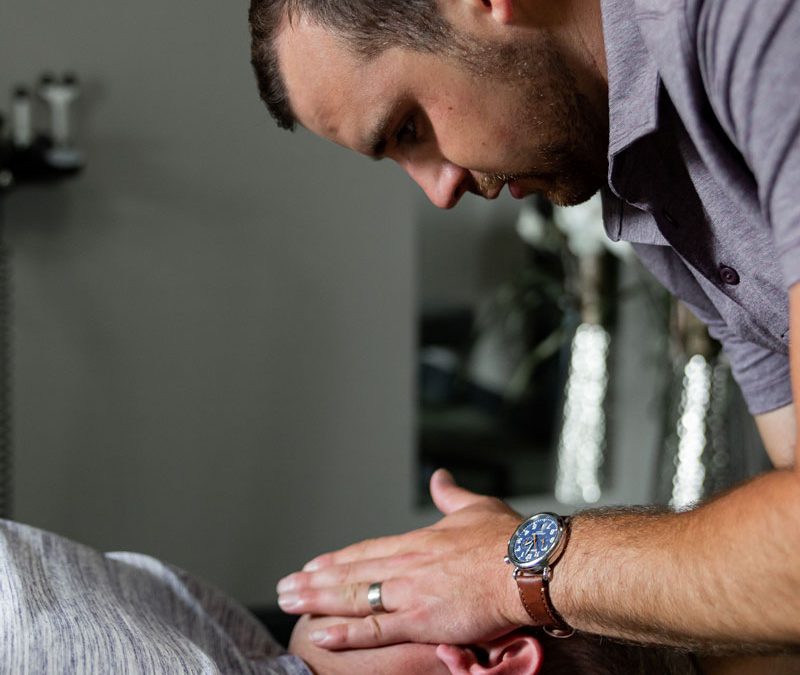TMJ dysfunction and its associated symptoms is a relatively common condition we see day to day here in the office. There is anywhere from a 5-12% prevalence rate in the general population, with it being more common in females, especially if on birth control. It is also one of those issues that many people have a tendency to self diagnose themselves with, which is usually harmless. However, there are scenarios this self diagnosis could be harmful and cost the patient a substantial amount of money in an attempt to treat something they may not even have. So let’s explore what temporomandibular joint dysfunction actually looks like, what causes it, and how it can be treated at home and here in the office.
WHAT ARE THE SYMPTOMS AND WHAT IS THE CAUSE?
TMJ dysfunction can present with a multitude of symptoms such as temporomandibular joint pain, headaches, neck pain, difficulty chewing, painful jaw movements, joint clicking/locking, painful teeth, and bruxism (grinding or clenching your teeth). While some unlucky individuals experience every single one of these symptoms, most individuals with TMJ only have one or two of these symptoms. But what is the cause of TMJ, and why are you dealing with it? TMJ dysfunction often has multiple causes, including, but not limited to, altered bite patterns, stress/anxiety, improper breathing patterns, night time bruxism, trigger points, improper posture, and even systemic changes in hormone levels. While addressing altered bite patterns is usually a job for your dentist or orthodontist, many of the symptoms are things conservative chiropractic care could substantially help with, with an exception of hormonal issues.
WHAT CAN WE DO FOR YOU?
Here at the office our main goal is to understand exactly why you are having TMJ issues. Are you so stressed with day to day life that you find yourself constantly clenching your jaw and grinding your teeth without even realizing it? Does your American posture–forward head carriage, rounded shoulders, and typing on your computer or scrolling on your phone–wreck your upper back and neck? With every breath, does your chest and neck rise, versus your diaphragm contracting, causing your abdomen to expand 360° like a balloon? Depending on the scenario, we have many tools, such as chiropractic manipulation, manual therapy, dynamic neuromuscular stabilization, scraping, neurodynamics, dry needling, and specific rehab exercises. Our treatment for TMJ dysfunction is personalized for every patient and aimed at correcting the driving cause of your symptoms while providing pain relief!
HOW CAN YOU HELP YOURSELF
The number one thing you can do to help yourself is to properly diaphragmatically breathe. Unless you have read my past blog post on the benefits of diaphragmatic breathing and how to achieve it, you may not be aware of how to do so. No problem, here’s the link: Diaphragmatic Breathing . Another important concept in dealing with TMJ dysfunction is learning how to allow your mouth and all the associated muscles to relax in a neutral position, rather than constantly clenching. This is achieved by some very simple techniques, try it with me. Lips closed, teeth apart, and tongue just slightly touching the roof of your mouth. This may feel relatively weird, but maintaining this position throughout the day will significantly help reduce muscles tightness, pain, and discomfort associated with temporomandibular dysfunction. Try it out and let us know if this helps!
WE CAN HELP:
If you feel like you’re having issues like this or something similar, call us today at 260-927-0581 or schedule an appointment online! There is no reason to live in pain. As always, we are here for you at ProActive Spine & Joint. Move well, live well: that’s what we want for our community and for you.
REFERENCES
Stephen M. Shaffer, Jean-Michel Brismee, Phillip S. Sizer & Carol A. Courtney (2014) Tempromandiubular disorders. Part 1: anatomy and examination/diagnosis, Journal of Manual and Manipulative Therapy, 22:1, 2-12

